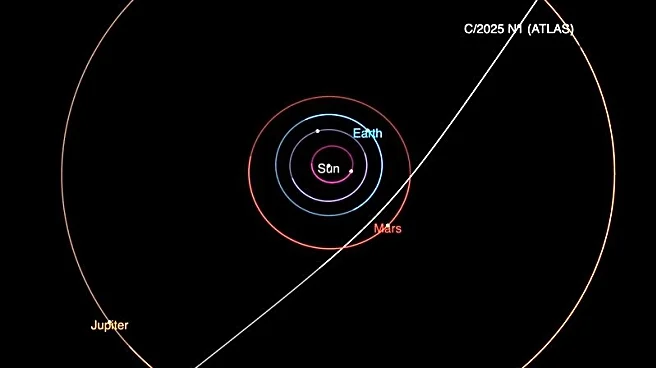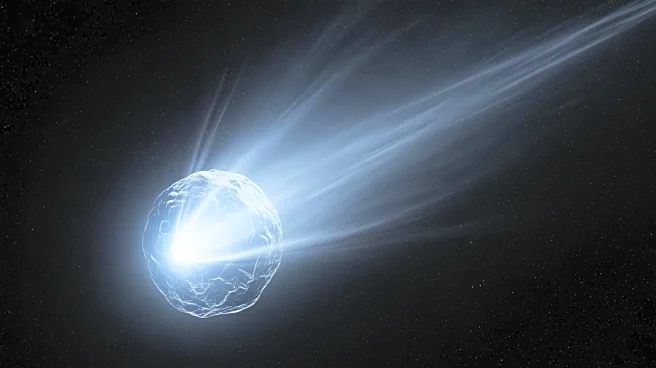What's Happening?
A study led by Yoshinori Miyazaki from Rutgers University has revealed new insights into two massive structures deep within the Earth, known as large low-shear-velocity provinces and ultra-low-velocity
zones. These structures, located at the boundary between the mantle and the core, are composed of extremely hot, dense rock and thin, partly molten layers. The research suggests these features are remnants of Earth's early history, potentially formed from a global ocean of molten rock. Over billions of years, elements like silicon and magnesium may have leaked from the core into the mantle, disrupting chemical layering and influencing the composition of these structures. This study combines seismic observations, mineral physics, and geodynamic simulations to propose that these deep features are crucial records of Earth's formation.
Why It's Important?
Understanding these deep Earth structures is significant as it may explain how Earth became habitable, contrasting with the conditions on Venus and Mars. The interactions between the mantle and core could have influenced Earth's heat release, volcanic activity, and atmospheric development. This research provides a framework for understanding Earth's unique evolution and its ability to support life. By linking deep mantle processes to surface phenomena like volcanic hotspots, the study offers a comprehensive view of planetary habitability, potentially guiding future research in planetary science and geodynamics.
What's Next?
The study opens new avenues for exploring Earth's interior and its impact on surface conditions. Future research may focus on further unraveling the chemical memory of early core-mantle interactions and their role in Earth's evolution. Scientists may also investigate how these deep structures influence current geological processes, such as volcanic activity. Continued collaboration between geodynamicists, mineral physicists, and planetary scientists will be crucial in advancing our understanding of Earth's formation and habitability.
Beyond the Headlines
The implications of this research extend to ethical and cultural dimensions, as understanding Earth's habitability can inform discussions on environmental stewardship and climate change. By highlighting the interconnectedness of Earth's systems, the study encourages a holistic approach to planetary science, emphasizing the importance of preserving Earth's unique conditions for future generations.












